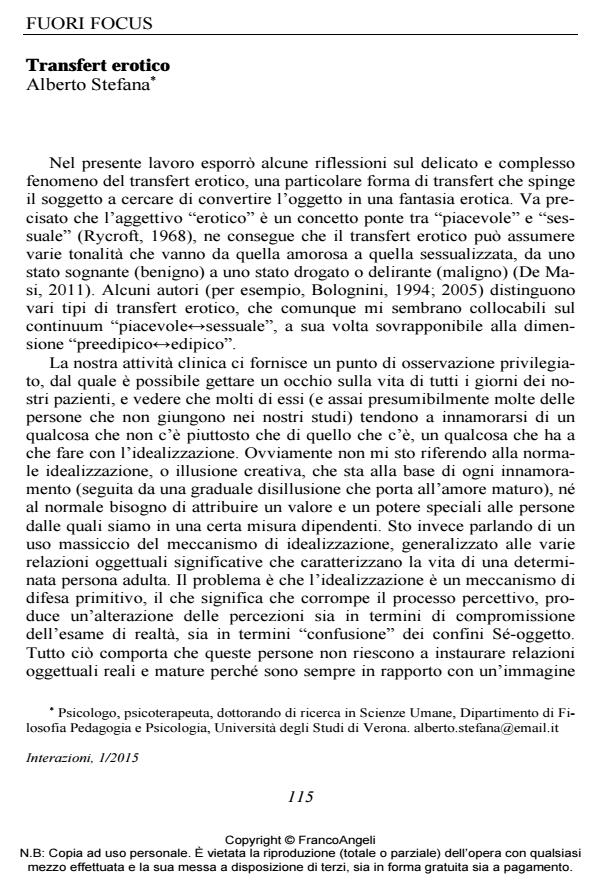Erotic transference
Journal title INTERAZIONI
Author/s Alberto Stefana
Publishing Year 2015 Issue 2015/1
Language Italian Pages 10 P. 115-124 File size 58 KB
DOI 10.3280/INT2015-001011
DOI is like a bar code for intellectual property: to have more infomation
click here
Below, you can see the article first page
If you want to buy this article in PDF format, you can do it, following the instructions to buy download credits

FrancoAngeli is member of Publishers International Linking Association, Inc (PILA), a not-for-profit association which run the CrossRef service enabling links to and from online scholarly content.
This article presents some reflections on the delicate and complex phenomenon of erotic transference (and of interrelated countertransference issues), a particular form of transference that compels the subject to convert the object into an erotic fantasy. It must be noted that the adjective "erotic" is a bridge-concept between "pleasurable" and "sexual". It follows that erotic transference can have various tonalities that go from a loving one to a sexualized one and from a dream state (benign) to a drugged or delusional state (malignant). Some writers distinguish between various types of erotic transference, which, however, can be placed on the "pleasurable-sexual" continuum, and which can in turn be superimposed onto the "preoedipal-oedipal"dimension.
Keywords: Erotic transference, erotic countertransference, idealisation, erotisation, sexualisation.
Alberto Stefana, Transfert erotico in "INTERAZIONI" 1/2015, pp 115-124, DOI: 10.3280/INT2015-001011